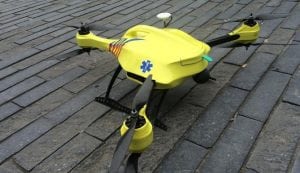
Agriculture
June 30, 2024
Ambulance Drone
Read SolutionImplemented by
TUDelft
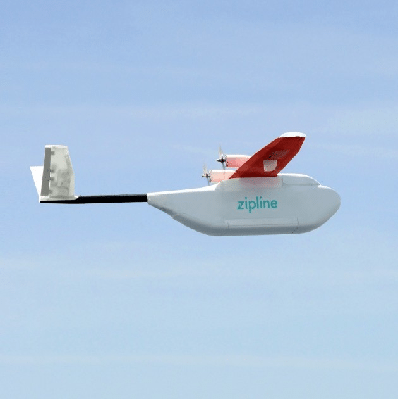
Updated on June 12, 2024
·Created on September 6, 2016
Zipline uses fixed wing drones to remotely deliver vaccines medicines and supplies.
Zipline is a delivery drone manufacturer that specializes in medical supplies delivery in remote locations in all weather conditions. Their drones or “Zips” are fixed-wing delivery drones that are currently serving up to 13,000 people in Rwanda (21 hospitals) and Ghana (more than 2,000 facilities). Their mission is to integrate their delivery system into the healthcare system and deliver life-saving medical products to remote hospitals or individuals in under 30 minutes. The Zip does not require a landing site at the delivery locations as the medical product is dropped by parachute into a designated landing zone, a target area of five meters in diameter, and then returns back to the distribution depot.
Zipline has expanded and devised additional applications in the US:
Target SDGs
SDG 3: Good Health and Well-Being
SDG 9: Industry, Innovation and Infrastructure
Target Users (Target Impact Group)
Community, Public Sector Agencies, NGOs
Distributors / Implementing Organizations
Zipline, GAVI, UPS, and the Rwandan Ministry of Health
Competitive Landscape
Direct competitors include Wingcopter 198.
Countries
Ghana, Rwanda
Manufacturing/Building Method
The drones are designed and assembled at Zipline's headquarters in Half Moon Bay, California.
Intellectural Property Type
Patent
User Provision Model
Zipline works with governments, NGOs or regional authorities to serve the medical community at the country level. Interested partners can contact Zipline on their information page or via email.
Distributions to Date Status
Zipline has made around 42,385 deliveries until now
Design Specifications
Zipline's "Zip" is a fixed wind drone. It is a proprietary design with all software and hardware designed in-house. It has a range of 100-150 km round trip, with 1.75 kg of cargo, depending on wind conditions. It is designed with redundancy in mind as it features two motors with independent batteries with redundant flight hardware both internal to the drone as well as on the ground based flight control servers. In the event of a catastrophic failure it has an emergency parachute and kevlar fuselage.
The navigation software is proprietary and is called ZipNav. The flight code is written in C/C++ on the drone and C++ and Python on the ground systems. They utilize Micrium for the RTOS on the drone.
Embedded systems on the drone use both Hercules and Atmel processors.
Technical details:
- Zipline uses pneumatic launch ramps to fire the drones aloft
- Drone power supply: 2 interchangeable batteries
- Drone weight: ~10 kg
- Products are discharged with a parachute into a designated landing zone
Technical Support
Provided by Zipline as a part of the service
Replacement Components
Batteries
Lifecycle
Unknown
Manufacturer Specified Performance Parameters
To be the last mile solution for critical medical supply deliveries in remote areas regardless of terrain or infrastructure.
Vetted Performance Status
Since launch, Zipline has over 42,385 deliveries including over 10,000 units of blood. Most deliveries arrive in under 30 minutes. Interview with representative The drones can deliver a product in about 15 minutes. They are capable of flying up to 75 mph with a range of about 93 miles. Each drone can support a payload of up to 3½ pounds.
Safety
All flights are coordinated with The Rwandan Civil Aviation Authority. All of the flight systems and hardware have built-in redundancies as well as an emergency parachute landing system in the case of catastrophic failure.
Complementary Technical Systems
Drone guidance system that logs the GPS coordinates for a received request and prints a delivery box label with a scannable code that programs the drone’s flight plan, thermally insulated packaging for the medicines, and blood. Zipline is also designing a custom guidance system.
Academic Research and References
Haidari, L.A., Brown, S.T., Ferguson, M., Bancroft, E., Spiker, M., Wilcox, A., Ambikapathi, R., Sampath, V., Connor, D.L. and Lee, B.Y., 2016, The Economic and Operational Value of Using Drones to Transport Vaccines, Vaccine, 34, pp. 4062-4067.
Heike, W., 2017, Framework for the Evaluation of Cost-Effectiveness of Drone Use for the Last-Mile Delivery of Vaccines, University of Barcelona, ISGlobal 2016-2017.
Padua, D., 2016, From Caravaggio to Braque: Digital Technology and the Illusion of Augmented Responsibility, Communication Technology, 474, pp. 241-256.
Scott, J.E. and Scott, C.H., 2017, Drone Delivery Models for Healthcare, Proceedings of the 50th Hawaii International Conference on System Sciences 2017.
The Roundup, 2016, Biomedical Instrumentation & Technology: May/June 2016, 50(3), pp. 148-151.
Taylor, Chloe. 2018. “Drones Set to Deliver Blood and Medical Supplies to Ghana’s Hospitals.” CNBC. December 13, 2018. https://www.cnbc.com/2018/12/13/drones-set-to-deliver-blood-and-medical-supplies-to-ghanas-hospitals.html
“Swoop Aero – Onwards Is Upwards.” n.d. Swoop Aero. Accessed June 12, 2024. https://swoop.aero/
TNN. 2018. “Drones Set to Fly in as Lifesavers in Rural India.” Times Of India. September 7, 2018. https://timesofindia.indiatimes.com/india/drones-set-to-fly-in-as-lifesavers-in-rural-india/articleshow/65713451.cms
“Goal 3.” n.d. Sdgs.Un.Org. Accessed May 29, 2024. https://sdgs.un.org/goals/goal3
Chambers, Andrew, Keenan Wyrobek, Keller Rinaudo, Ryan Oksenhorn, and William Hetzler. 2016. System and method for human operator intervention in autonomous vehicle operations. 9488979. US Patent, filed April 14, 2015, and issued November 8, 2016. https://patents.google.com/patent/US9488979
Chambers, Andrew, Bryan Wade, Catalin Drula, David Halley, Igor Napolskikh, Keenan Wyrobek, Keller Rinaudo, et al. 2016. Unmanned aerial vehicle management system. 9489852. US Patent, filed January 22, 2015, and issued November 8, 2016. https://patents.google.com/patent/US9489852?oq=zip+line+incorporated+drone+patents
“Zipline Logistics & Drone Delivery.” n.d. Zipline. Accessed June 12, 2024. https://www.flyzipline.com/
zipline_ryan. n.d. “We Are Engineers from Zipline and Today We Made 17 Lifesaving Deliveries by Drone in Rwanda. We Fly through Rain and Wind to 8+ Hospitals across the Country. Ask Us Anything!” Reddit.Com. Accessed June 12, 2024. https://www.reddit.com/r/IAmA/comments/6ix6nx/we_are_engineers_from_zipline_and_today_we_made/?lipi=urn%3Ali%3Apage%3Ad_flagship3_company%3BEliEiW9rRPO3Z23KY1xDHA%3D%3D
“Micrium Software and Documentation.” n.d. Silabs.Com. Accessed June 12, 2024. https://www.silabs.com/developers/micrium
“Arm-Based Microcontrollers.” n.d. Www.Ti.Com. Accessed June 12, 2024. https://www.ti.com/microcontrollers-mcus-processors/arm-based-microcontrollers/overview.html
“Empowering Innovation.” n.d. Microchip.Com. Accessed June 12, 2024. https://www.microchip.com/
Evangelista, Benny. 2016. “Drones from Bay Area Startup to Deliver Vaccines in Africa.” SFGATE. May 9, 2016. https://www.sfgate.com/business/article/Drones-from-Bay-Area-startup-to-deliver-vaccines-7413254.php
Zaleski, Andrew. 2016. “Your Critical Medical Supplies Could Be a Drone Away.” MedCity News. August 22, 2016. https://medcitynews.com/2016/08/drone-healthcare-medical-supplies/
Knight, Renee. 2016. “Drones Deliver Healthcare.” Inside Unmanned Systems. September 3, 2016. https://insideunmannedsystems.com/drones-deliver-healthcare/
“The First-Ever OSTP Workshop on Drones and the Future of Aviation at the White House.” 2016. Whitehouse.Gov. July 21, 2016. https://obamawhitehouse.archives.gov/blog/2016/07/21/first-ever-ostp-workshop-drones-and-future-aviation-white-house
“Drone Laws in Ghana.” 2022. UAV Coach. December 2, 2022. https://uavcoach.com/drone-laws-in-ghana/
Compliance with regulations
In Rwanda: Zipline works closely with the Rwandan Civil Aviation Authority and is in compliance with all applicable UAV regulations.
In Ghana: UAV regulations.
Zipline is working toward Federal Aviation Administration certification
Evaluation methods
Field trials that evaluated the cost-effectiveness of drone delivery compared to other methods.

Agriculture
June 30, 2024
Implemented by
TUDelft

Agriculture
June 8, 2024
Implemented by
GiftedMom
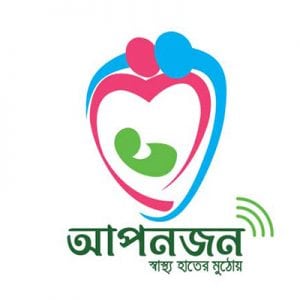
Agriculture
June 8, 2024
Implemented by
MAMA Bangladesh

Agriculture
June 6, 2024
Implemented by
emocha Mobile Health

Agriculture
June 7, 2024
Implemented by
SES S.A.
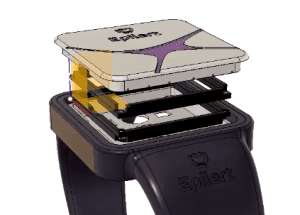
Agriculture
June 8, 2024
Implemented by
Firas Rhaiem
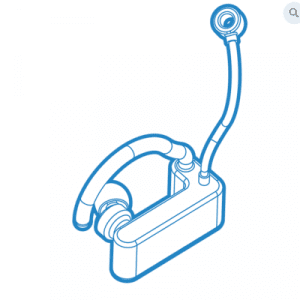
Agriculture
June 29, 2024
Implemented by
Ker-Jiun Wang
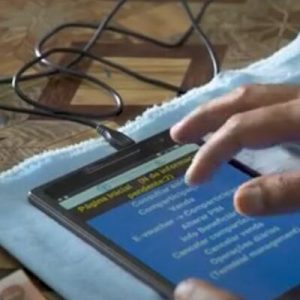
Agriculture
June 29, 2024
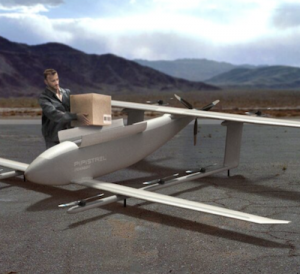
Agriculture
June 28, 2024
Implemented by
Pipistrel
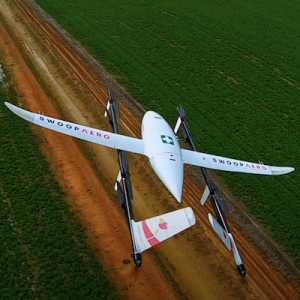
Agriculture
June 28, 2024
Implemented by
Swoop Aero
Have thoughts on how we can improve?
Give Us Feedback